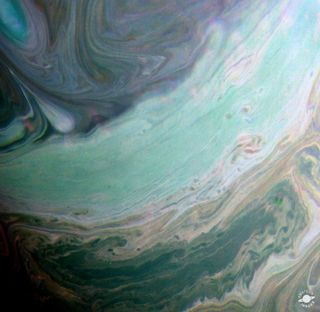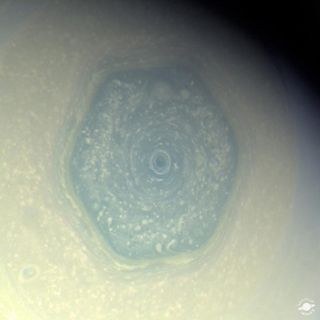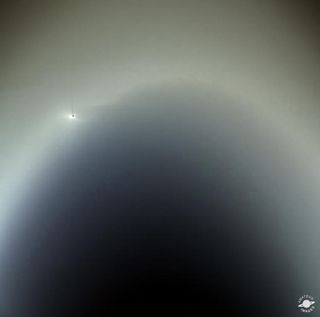Spectacular Saturn Images by 'Amateurs' Will Make Your Jaw Drop
Saturn's swirling clouds

Kevin M. Gill produced this false-color view of Saturn's clouds from raw images that Cassini captured on July 20, 2016. For those with photo-tech know-how, Gill said: "I mapped the CB2 filtered image (.75 micron wavelength) to red, MT2 (.727 microns) to green and MT1 (.619 microns) to blue."
Bizarre hexagon on Saturn

"This is a true color view of Saturn's north polar region, taken by Cassini's Imaging Science Subsystem (ISS) on June 26, 2013," the producer Val Klavans said in a NASA statement. "Saturn's mysterious hexagon is visible in the center."
Klavans added: "This composite is made of images that were taken on June 26, 2013 and received on Earth June 27, 2013. The camera was pointing toward Saturn at approximately 402,383 miles (647,573 kilometers) away, and the images were taken using the CL1, RED, BL1 and GRN filters."
Enceladus feeding the E ring

Val Klavans also created this Cassini image, showing the Saturnian moon Enceladus inside the E ring. "On July 19, 2013, you waved at Saturn. The Cassini spacecraft was there to snap a photo of not only us, but the Saturn system," Klavans said.
"This composite is made of images that were taken on July 19, 2013 and received on Earth July 20, 2013. The camera was pointing toward SATURN-ERING at approximately 740,000miles (1,200,000 kilometers) away, and the images were taken using the CL1, RED, BL1 and GRN filters," he added in a statement.
Join our Space Forums to keep talking space on the latest missions, night sky and more! And if you have a news tip, correction or comment, let us know at: community@space.com.
Get the Space.com Newsletter
Breaking space news, the latest updates on rocket launches, skywatching events and more!



